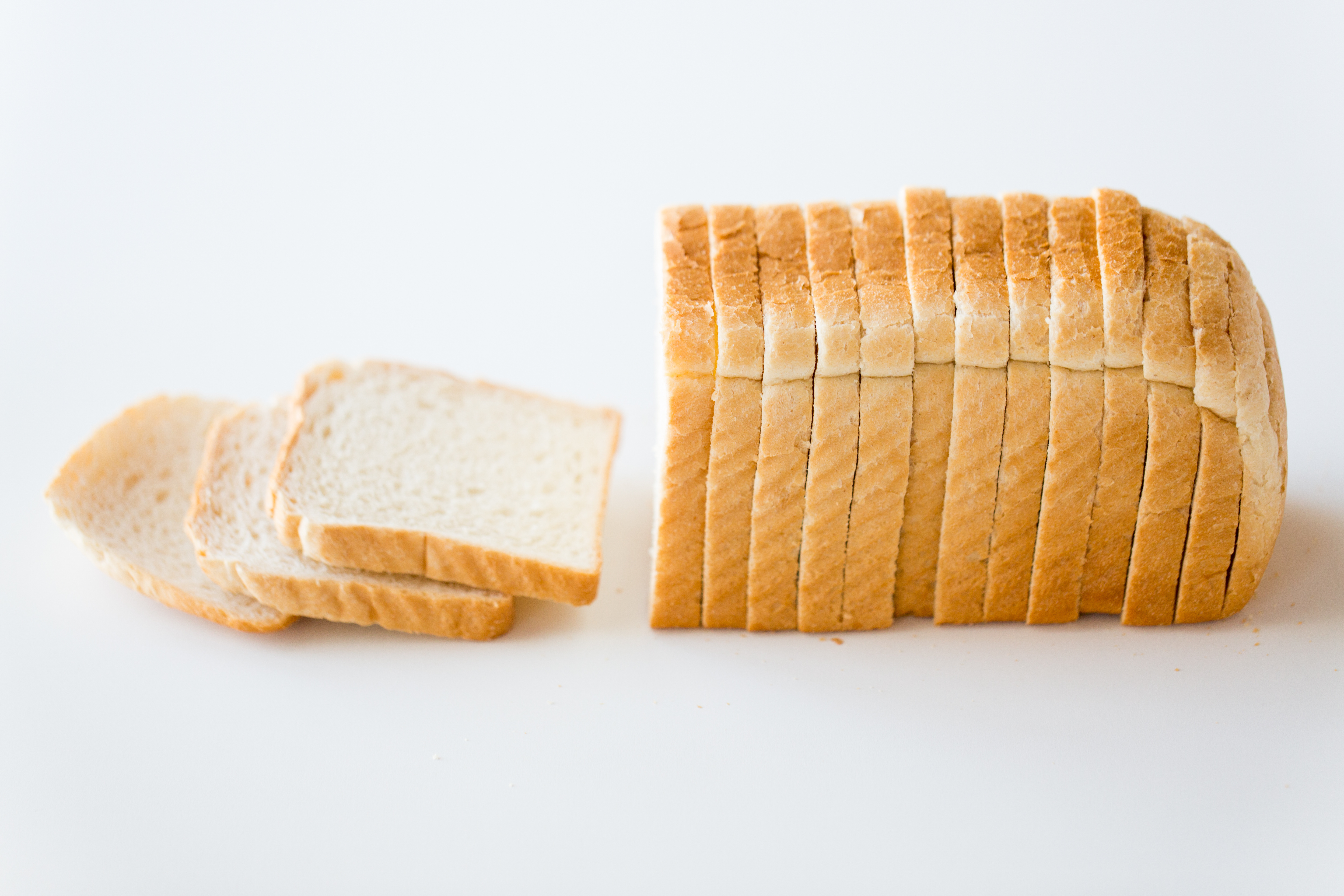You asked, we listened. Follower question of the week.

Q: Why are you always mentioning slices of white bread?
A: At the F-Factor private practice, we use a slice (or slices) of white bread as a point of reference so our clients can gauge the carbohydrate density of foods. We call this the F-Factor Principal of Carbohydrate Equivalency (AKA the slice of white bread rule), and we explain why we use this, what it means, and some common examples here.
SOME BACKGROUND
When living the F-Factor Way, counting calories is not necessary. Instead, the focus is on net carbs, because net carbs are what either get used for energy or converted into body fat.
TOTAL CARB – FIBER = NET CARBS
For sustainable weight management, you want to keep your net carbs low because that’s how you can eat the carbs you need for energy without gaining weight… and if you keep your net carbs low enough, you can put your body in a position to burn fat for fuel. But, to track net carbs, it helps to have a sense of what a typical serving of carbohydrates looks like. This is where the white bread comes in.
THE F-FACTOR PRINCIPAL OF CARBOHYDRATE EQUIVALENCY–AKA THE SLICE OF WHITE BREAD RULE
When it comes to estimating portion sizes/making smart choices about what we should eat, many of us tend to have a much better grasp of what X number of calories looks like than we do X number of carbs. So, to give people a sense of what a serving of carbs or a number of grams of carbs looks like, we speak in terms of slices of white bread. Everyone knows what a slice of white bread looks like, well, that’s 15g of carbs, which is 1 serving. Two slices of white bread? That’s 30 grams of carbs. Now, picture a stack of 3 slices of white bread. That’s 45 grams of carbs. And so on.
If you’re thinking, that’s great, but who’s eating stacks on stacks of slices of white bread? Good, you’re right, that’s the point. Three slices of white bread as an afternoon snack is an odd choice. But at the same time, a grande soy latte is a pretty normalized afternoon pick-me-up. Not only do people have no qualms about heading to the coffee shop to order one up, but for some people, that’s an integral part of their daily routine; they have a grande soy latte every afternoon, Monday through Friday. Well, here’s the kicker. That seemingly innocuous grande soy latte is 41 grams of carbs. Now, picture that stack of 3 slices of white bread again. That latte is almost 3 slices of white bread! Imagine, THREE slices of white bread, between lunch and dinner, just over that 4pm hump! Makes you think twice about that latte now, huh?
SO THE PURPOSE OF THIS IS…
Speaking in terms of slices of white bread is a visualization exercise that helps people conceptualize whether a food has a lot of carbs (and thus will take up more space in their glycogen stores) or a little. And like we mentioned before, less carbs ingested = less net carbs = greater chance your body burns fat for fuel because it is in the absence of net carbs that your body begins to burn fat for fuel.
Could you say this principle in and of itself is the greatest thing since sliced bread? We won’t argue against it!
THE SLICE OF WHITE BREAD RULE IN PRACTICE
The alternate name for this is the Slice Of White Bread Rule (the SOWBR), because we’re viewing foods in terms of slices of white bread. In fact, we often use the phrase slice of white bread territory when describing the carb content of certain foods. So, to further paint the picture for you, here are some common foods and how many slices of white bread they equate to – and for some of you, surprising sources of carbohydrates too.
… and on the flip side…
NOW, KEEP IN MIND…
Just because a food has a high number of carbs doesn’t mean it’s necessarily bad for you or off limits, at all, by any means. This is because the carb content of carbohydrate-dense foods can be offset if a portion of those carbs are fiber (remember, total carb – fiber = net carb). With that being said, if a food has the carbohydrate equivalent to 2, 3, 4 (or more!) slices of white bread, you can still have it on F-Factor (especially if you’re on Step 2 or Maintenance), so long as you have enough net carbs left to not exceed your daily net carb allotment. As a reminder, on Step 1 of The F-Factor Diet you can have a maximum of 35g net carb per day, on Step 2 75g net carb, and on Maintenance you can enjoy 125g of net carbs each day. So, to enjoy the largest amount of carbohydrates without gaining weight–to really stretch the amount of carbs you can eat–aim for those with the most fiber. The greater the portion of carbohydrates in a food that are actually fiber, the lower the net carb. And again, the lower the net carb, the greater your chances of burning fat for fuel.